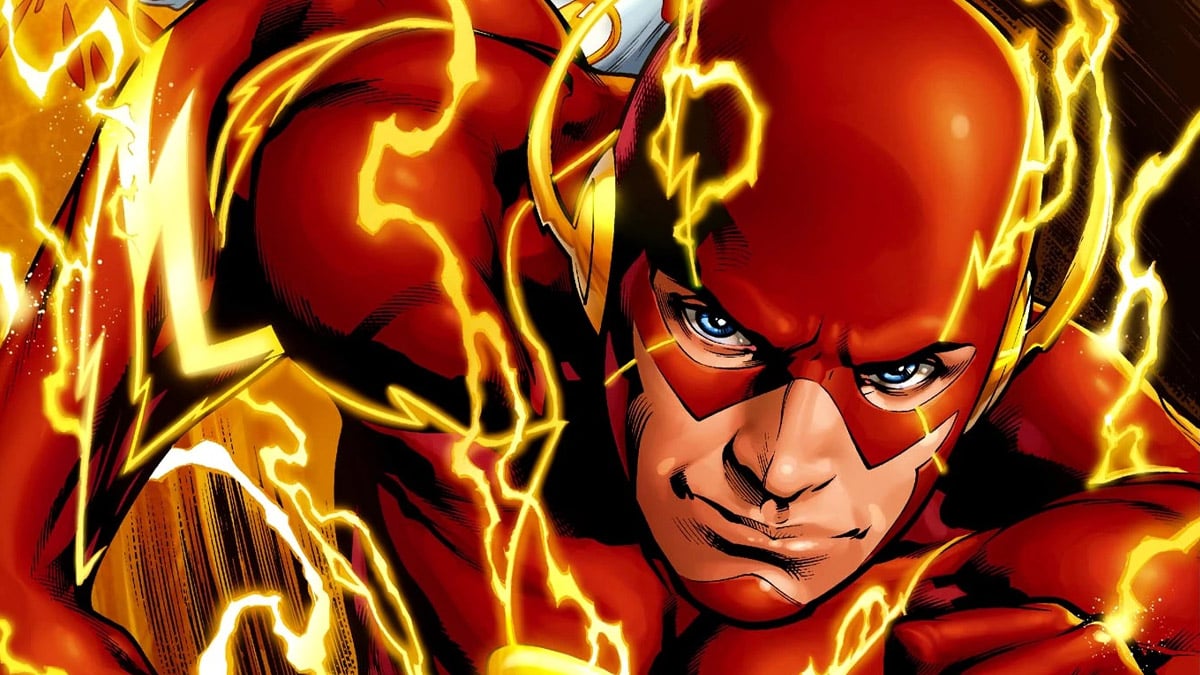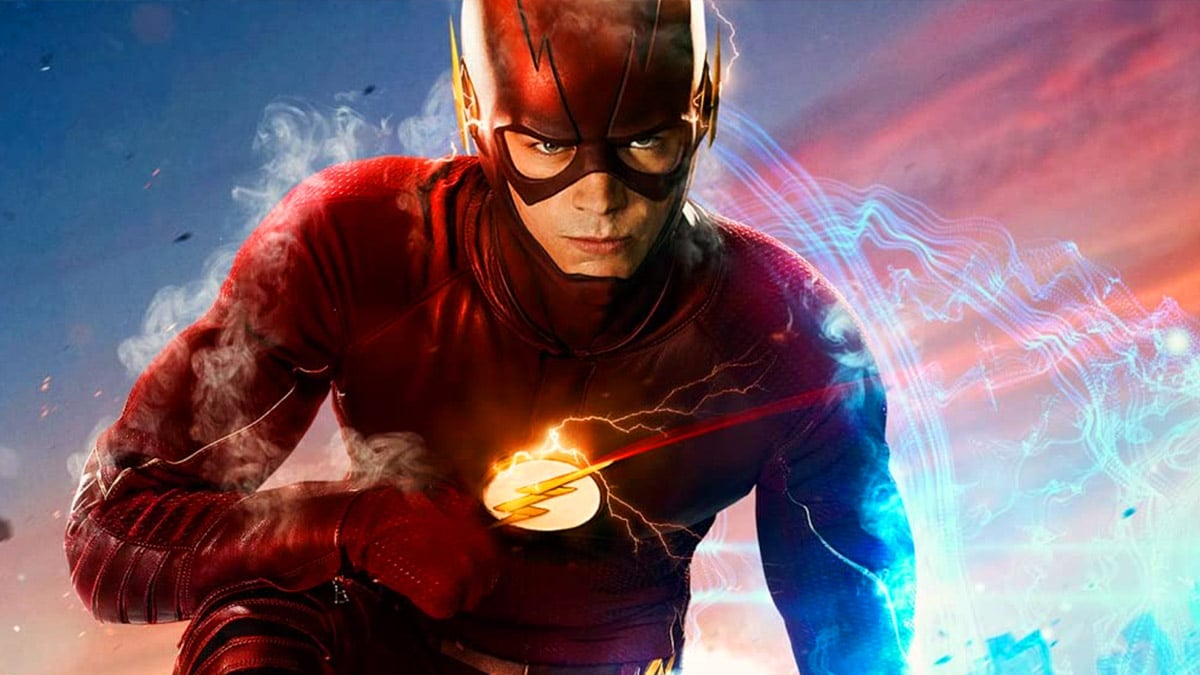The question of who’s the fastest hero has been, ahem, a long-running joke in DC Comics. It hasn’t taken much to pit the Flash and Superman against each other since their friendly rivalry began in 1967’s Superman’s Race with the Flash.
Although the speedster definitively beat Superman three years later in World’s Finest Vol 1 #199, those contests developed a reputation for being inconclusive. Sometimes they were interrupted, other times they ended in a draw or even stalled in slow-mo like the post-credit sequence of 2017’s Justice League.
Flash: Rebirth #3 confirmed newly returned Silver Age Flash Barry Allen as the quicker of the pair. It’s good of Big Blue to hand the Scarlet Speedster something, but getting one over Superman isn’t the only time the Flash had to push out the boat at superspeed.
As faster-than-Kryptonian isn’t yet recognized as a speed metric, how fast is the Flash?
Speeding through the comics

No matter who’s carrying the mantle, the Flash derives their power from the Speed Force. That’s an extradimensional and cosmic energy source that propels space and time, providing an energy uniquely drawn by DC’s Flash family. Other super-quick beings exist, but they derive their speed from other places. For instance, the yellow sun provides Superman’s powers while Wonder Woman, Shazam, and Black Adam draw their abilities from the pantheons of gods.
The Speed Force doesn’t just boost Flash’s step count — it can also speed up his speech, thought, metabolism, and healing. The speedster has been shown to learn at a high pace, but like calories, those abilities burn off quickly.
Understandably, speed has been central to the Flash’s adventures since the character first appeared in the Golden Age form of Jay Garrick in 1939. In 1985’s Crisis on Infinite Earths, Silver Age Flash Barry Allen stopped the Anti-Monitor’s destruction of Earth by drawing his antimatter power into a speed vortex, apparently draining his life in the process. Kid Flash Wally West took on the mantle, ready to set new records in the Modern Age.
JLA Vol 1 #89 began with West outrunning a nuclear explosion to save more than half a million people, carrying them beyond its reach no more than two at a time. The comic calls that “near light,” but it would require a speed significantly faster. Light speed is approximately 186,000 miles per second or 670,616,629 mph.
In The Flash #138, writer Grant Morrison subjected West’s Flash to an impossible race for the sake of Earth. Facing defeat, he picked up a hint from his rival that he could harness kinetic energy from the populace of his home world. Mobilizing humanity to run en masse, West reached trans-time velocity, winning the race by, staggeringly, traveling faster than instantaneous teleportation.
Achieving broadcast velocity
On TV, The CW’s The Flash has been the most successful adaptation of the Scarlet Speedster’s life in Central City. The series concentrates on the most famous incarnation, Barry Allen, who, having been lost to the comics during 1985’s Crisis on Infinite Earths, had emerged from the Speed Force after 2008’s Final Crisis reset.
The show’s Flash family is built around Allen, the Scarlet Speedster who has steadily built up the speed and range of his abilities since 2014.
Over The Flash’s nine seasons, Allen’s abilities have grown, with the mysterious Speed Force providing an excellent excuse for any inconsistencies. The best way to think of the TV Flash is as a meta-powered speedster who draws on the Speed Force for turbo boosts.
The Flash’s speed by season
In the show’s first episode, Barry outran an F5 tornado generated by Clyde Mardon, the brother of well-known Rogue, Weather Wizard. In doing so, Allen reached a speed just under the speed of sound — not a bad start.
It took five weeks for the Flash to break the speed barrier by reaching Mach 1.1 (844 mph) in an episode fittingly called The Flash Is Born. He would soon learn to modulate his body while running to avoid the sonic boom that comes from that speed. By the end of the season, Flash had time-traveled by opening a singularity in the controlled environment of S.T.A.R. Labs at Mach 2 (1535 mph).
In Season 2, Allen gained a mentor, even if he was an enemy in disguise. Hunter Zoloman, pretending to be Earth-2’s Jay Garrick, helped Allen boost his speed to steal it for himself. The speed boost paid off quickly. Battling a criminal with speed powers gained from the dangerous drug Velocity-9, Allen reached Mach 3.3 (2532 mph). Training with a tachyon device that developed his abilities to leap to other dimensions, Allen smashed his record, achieving four times his previous top speed (10,128 mph). Side abilities he picked up on the way to defeating Zoloman’s Zoom included throwing lightning, dimension jumping, and creating time remnant duplicates from his potential future.
In Season 3, the Flash faced the so-called god of speed, Saviatar. Knowing his fiancée, Iris, would die if he failed, Allen pushed himself to faster speeds. By this point, Allen jogs along just under Mach 3 (2,302 mph).
The arrival of the Thinker in Season 4 meant Allen had to compete with the speed of meta-thought. In response, he developed the hyperaware ability Flashtime. This allowed him to retain full awareness while traveling at speeds that made him invisible to non-Speedster eyes. Logically, by this point, Allen could move just below the speed of light.
Season 5 didn’t add to Allen’s speed but saw him increase his understanding of the Speed Force and set him up for future records and abilities.
By the start of Season 6, Allen was outrunning black holes — the universal force from which light cannot escape. Beating the event horizon of a singularity implied Allen was drawing on the most mystical elements of the Speed Force as he reached up to Mach 874,031 (670.6 million mph). His power downsized just one episode later when he was stated to be traveling 80 times slower than pure light (so about Mach 10,925), but that may have been Allen running without tapping the full potential of the Speed Force.
Season 7 was more about diversifying Allen’s powers as his speed hit the wall. New abilities included speed thinking, which allowed him to calculate faster than a quantum computer. Still, Allen was said to be faster than ever, which he undeniably proved when he out-paced his nemesis Reverse Flash.
In the six months between the seventh and eighth seasons, Allen continued to level up his powers. Early on, Team Flash member Caitlin Snow referred to him running at 4,000 miles an hour which, at Mach 5, must have been a depreciating joke. Later separated from the Speed Force (thanks to the Reverse-Flashpoint reality), Barry confirmed that he could achieve Mach 5 independent of that energy source.
In the show’s final season, Allen’s speed to beat on screen was an impressive black hole-beating Mach 874,031. By staying on good terms with the changeable Speed Force, he managed to defeat the Negative Speed Force and passed the torch to a new generation of speedsters to protect Central City. The final episode was a fitting and emotional send-off to arguably one of the best portrayals of a superhero on television.
Zooming into cinemas
The alternate Barry Allen brought his superspeed to movie theaters in one of DC’s tentpole 2023 releases, which showed the dimension-hopping racer achieving new speeds. He previously reached light speed in Zack Snyder’s Justice League. In Andrés Muschietti’s The Flash, he accidentally accessed the Speed Force to travel back to designated points in time. In doing so, he throws the entire multiverse into disarray, resulting in a present-day where Clark Kent never made it to Earth, General Zod was never defeated, and variant versions of people he knows (such as Bruce Wayne) have replaced those he’s familiar with.
Desperate to save his mother from being murdered and his father from taking the blame for it, Barry is ultimately forced to make a decision about which multiverse he wishes to live in; the one he’s familiar with (and the one not crumbling under Zod’s oppressive thumb) or the one where his mom is alive but the world is destroyed. Needless to say, in order to achieve all this, Allen taps as deep into the Speed Force as the DCU version of the character has ever been before.
The movie itself may not have done wonders for DC Studios at the box office (that’s putting it lightly), but it highlighted just how powerful this version of Barry Allen is. In a way, he is single-handedly responsible for resetting the DCU’s timeline so it may carry out its “Gods and Monsters” phase, which includes movie and TV shows that stretch well into 2027 and beyond.

